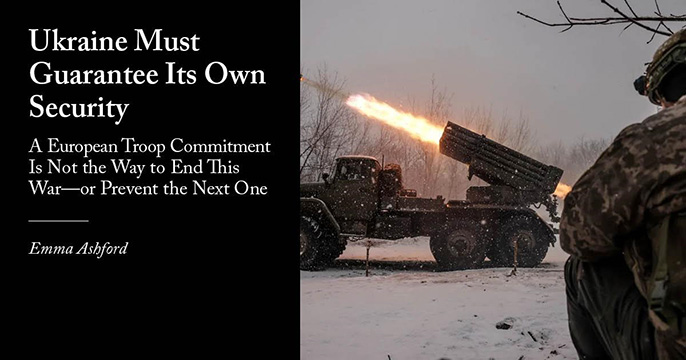
At last Ukraine Defense Contact Group meeting in Brussels, newly minted U.S. Defense Secretary Pete Hegseth declared that the position of the U.S. government was that Ukraine will not join NATO. Although greeted with horror by some in Washington and in European capitals, Hegseth’s remarks were in fact more a public statement of reality than a genuine change in policy, writes ‘The Foreign Affairs’.
This position had been telegraphed throughout the Trump campaign and transition, and even the Biden administration had been skeptical of Ukrainian membership any time soon. The risks of admitting Ukraine to the alliance — reflected in widespread opposition to it in the United States, Germany, and elsewhere — have long made this reality perfectly clear to all.
With the Trump administration insisting that no U.S. troops be sent to Ukraine, the conversation in European capitals is increasingly focused on whether and how European states can provide “security guarantees” through their own deployments.
Yet there are reasons to doubt whether a European guarantee to provide troops for Ukraine is feasible, especially without substantial U.S. involvement.
With NATO off the table, and the United States refusing to send troops, discussion in European policy circles has focused on ways to provide a security guarantee for Ukraine that replicates but does not require NATO membership. Some agreements are already in place: states including France, Poland, and the United Kingdom have signed bilateral security cooperation agreements with Ukraine, mostly related to weapons or training.
Commitments to provide troops, however, have been less forthcoming. Private discussions on troop deployments to enforce a line of demarcation are ongoing. British Prime Minister Keir Starmer has said that his country could send troops, but French President Emmanuel Macron — the only European leader to previously pledge such deployments — has become equivocal on this question, backing off his original commitment. Poland, perhaps the most vocal supporter of Ukraine, has flatly denied plans to send troops to Ukraine.
Even if European states could somehow scrape together the political will to provide such a force, other significant problems would arise. The current frontline in Ukraine is over 500 miles long; Ukraine’s borders with Russia and Belarus are over 2,000 miles long. Various military assessments suggest that between 40,000 and 200,000 troops would be necessary to enforce peace and to deter Russia from future attack. The upper end of that scale is simply not feasible given existing forces and readiness; current talks are instead focused near the low end, a proposed deployment of around 50,000 European troops.
Even 50,000 troops would be a significant lift for European states, requiring them to pull peacekeepers from other conflicts and to ignore NATO’s own defense-planning requirements. It would add a significant new mission for European forces at the same time they are being asked to take over defense burdens from the United States. And perhaps most problematic is that such a force would likely be insufficient to deter Russia, acting instead as a tripwire force that could pull Europe into any new war. One recent report from the German think tank SWP described this as a “bluff and pray” approach, in which European states make commitments that match their current capabilities, even if these are manifestly inadequate.
For one thing, most experts writing about the potential deployment of European troops in Ukraine usually include a caveat: the backing of U.S. enablers (in the form of assistance on command and control, aerial refueling, and intelligence, surveillance, and reconnaissance) would be necessary to make the deployment possible. This need reflects the reality that European states are not fully capable of mounting an operation of this size without U.S. support, meaning that U.S. troops would have to be present, at least in small numbers, to support European deployments.
What’s more, an all-European mission in Ukraine would still raise the risk that the United States would be pulled into a future war in Ukraine. This is particularly true in the case of a small European deterrent force that doesn’t have sufficient reserves to call on in a crisis. Even if U.S. policymakers were clear up front that NATO’s Article 5 would not apply to the deployed European troops, the pressure to respond in the event of a Russian attack would be overwhelming, potentially pulling the United States into war.
A final problem is a significant European force in Ukraine would seem to contradict one of Russia’s basic demands throughout the conflict — that Ukraine not play host to NATO forces or bases. It could easily become a stumbling block to peace negotiations themselves.
Over ten years, the scope of the conflict has grown, and the underlying issues have metastasized. Many of the mechanisms that had previously assisted in mediating tensions between NATO and Russia, such as the Organization for Security and Cooperation in Europe and various arms-control forums, have atrophied or been allowed to dissolve.
Yet the core underlying causes remain: Russian opposition to Ukraine’s reorientation toward the West, including NATO and the European Union at a time when Russia has been systematically excluded from Europe’s security architecture.
read more in our Telegram-channel https://t.me/The_International_Affairs

 10:36 25.02.2025 •
10:36 25.02.2025 •






















